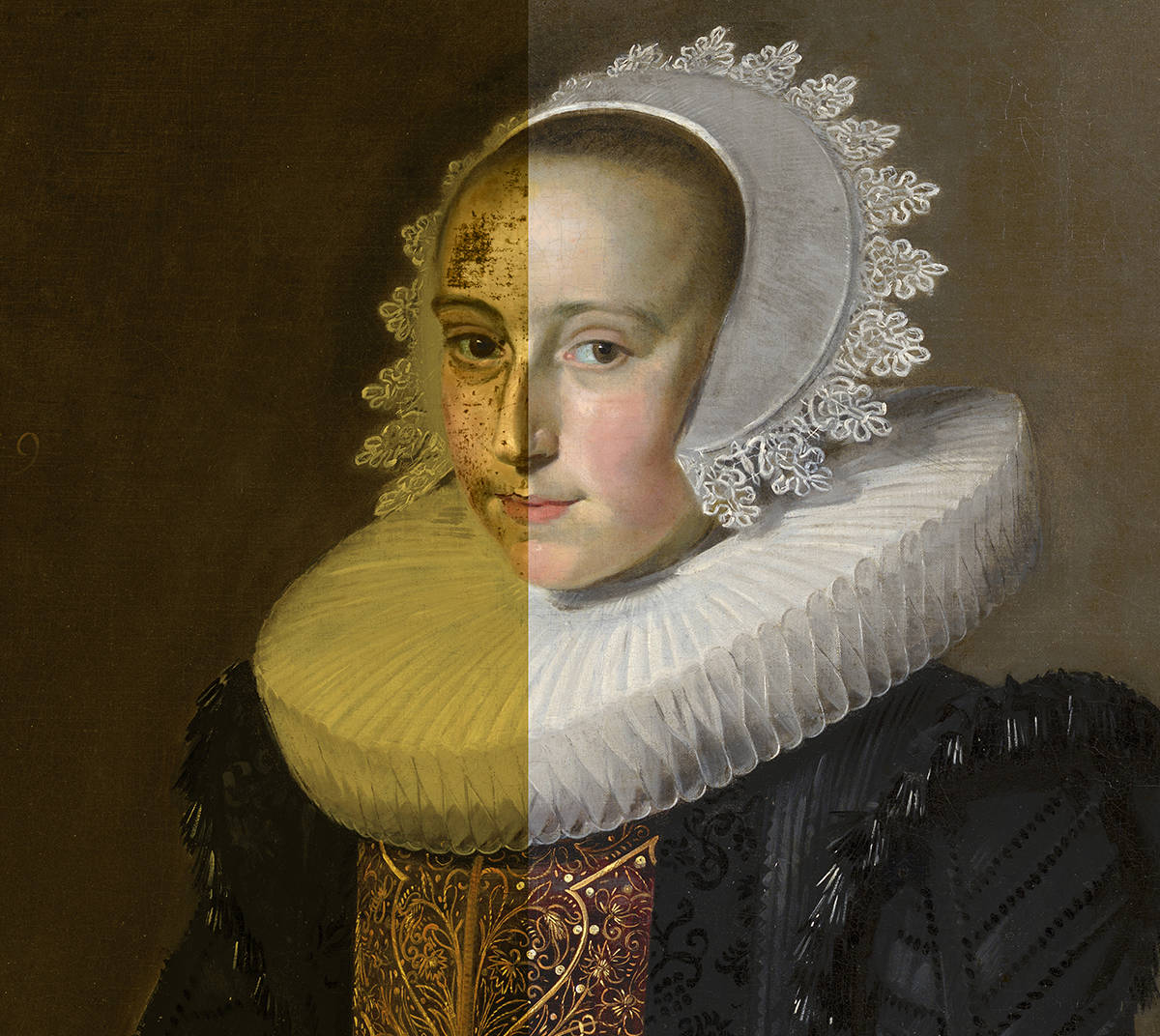
Conservation at the Mauritshuis
The exhibition focuses on one of the Mauritshuis’s most important tasks: caring for the collection of paintings through conservation, restoration and research. Since 1995, a team of conservators (often supplemented by external specialists and students) has been working in the well-equipped conservation studio. The studio not only carries out conservation treatment, but it also forms an important research centre that unfortunately cannot be accessed by the public. More and more research is being undertaken into the materials and techniques that painters used, with conservators using the latest techniques and state-of-the-art equipment, such as a 3D scanning microscope that can take extremely high-resolution images of the paint surface. Visitors to the museum have been able to observe conservation treatment in action on several occasions, for example during the conservation of Vermeer’s Girl with a Pearl Earring and View of Delft (1994), the research project Girl in the Spotlight (2018) and more recently The Lamentation of Christ by Rogier van der Weyden (2019). Facelifts & Makeovers tells the story of 20 paintings that have found their way to the conservation studio over the past 25 years. In the exhibition, visitors will learn more about ‘varnish removal’ (replacing old layers of often yellowed varnish with more durable finishes), ‘pentimenti’ (literally ‘expressions of repentance’, changes made by the artist during the painting process), ‘dendrochronology’ (a technique for dating boards from a wooden panel), ‘attribution’ (identifying the maker of a painting) and ‘consolidating’ (securing flaking paint).
A new cloudy sky
The Mauritshuis has three paintings by Johannes Vermeer in its collection: the famous works Girl with a Pearl Earring and View of Delft, but also the lesser known Diana and her Nymphs. During conservation treatment of Diana and her Nymphs in 1999, research into the pigments used revealed that rather than having been painted by Vermeer, the cloudy sky was in fact a later addition. After weighing up the pros and cons, it was decided that instead of removing the cloudy sky, it would instead be hidden from view. As is now common practice, this treatment is reversible. In other words, the thin layer of paint over the sky can easily be removed at a later date if future generations think differently. This intervention returned the painting from 1653-54 to the painter’s original vision: the depiction seems more intimate and the fall of light is more convincing. We now know that Diana and her Nymphs is one of the Delft artist’s earliest paintings.
A new shoulder
The portrait of William of Orange by Adriaen Key (ca. 1544 – after 1589) underwent intensive conservation. At some point the left-hand strip of the panel had become damaged, possibly as a result of woodworm. As a result, this part of the panel had previously been replaced by another piece of wood. The greatest challenge during conservation treatment was posed by this new strip, to the left of the prince’s ear. William’s shoulder and clothes needed to be fully reconstructed, down to the smallest detail and accurate to the square millimetre. The conservator used two very similar portraits that Adriaen Key had also made of the prince as an example. The end result: a successful makeover!
Work in progress: a ‘new’ soldier?
For one of the paintings in the exhibition, conservation treatment is still a ‘work in progress’, which is why the work has been removed from its frame to be enjoyed as the concluding piece in the exhibition. A Man Smoking and A Woman Drinking in a Courtyard by Pieter de Hooch from around 1658-60 shows a seated man with a woman and a child in a Dutch courtyard. However, De Hooch originally painted a fourth figure (as can be seen in the other version of the painting in the National Gallery of Art, Washington): a soldier in a cuirass holding a tankard of beer. For unknown reasons, he became surplus to requirements over the centuries and was removed. What remains of the soldier are his cape (on the railings), his pipe (on the table) and part of his thumb (on the tankard). Recently the remainder of this soldier, which was still hidden under a layer of paint, was once again made visible. To complete this conservation project, there are various possible options for the soldier and these are currently under consideration.
Facelifts & Makeovers
7 October 2021 - 9 January 2022
Supporters
The exhibition Facelifts & Makeovers has been made possible thanks to the support of the Friends of the Mauritshuis Foundation, Mondriaan Fund, Marjan Ornstein Fonds, Fonds 1818 and the American Friends of the Mauritshuis.
